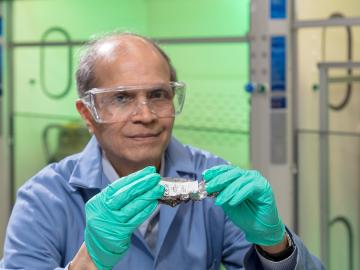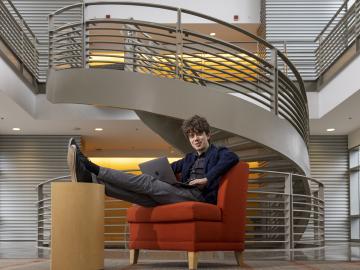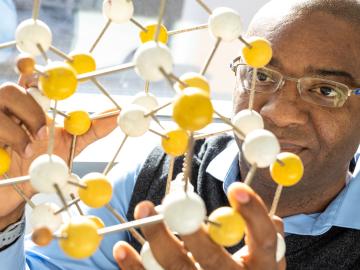
Filter News
Area of Research
- (-) Materials (27)
- Advanced Manufacturing (1)
- Biology and Environment (10)
- Clean Energy (41)
- Fusion and Fission (5)
- Fusion Energy (1)
- Isotopes (4)
- Materials for Computing (2)
- National Security (7)
- Neutron Science (12)
- Nuclear Science and Technology (14)
- Quantum information Science (3)
- Supercomputing (20)
News Type
News Topics
- 3-D Printing/Advanced Manufacturing (4)
- Advanced Reactors (1)
- Artificial Intelligence (2)
- Big Data (2)
- Bioenergy (1)
- Biomedical (1)
- Chemical Sciences (2)
- Climate Change (1)
- Computer Science (6)
- Coronavirus (1)
- Cybersecurity (1)
- Energy Storage (3)
- Environment (2)
- Exascale Computing (1)
- Isotopes (1)
- Machine Learning (3)
- Materials (1)
- Materials Science (13)
- Mathematics (1)
- Microscopy (1)
- Molten Salt (1)
- Nanotechnology (6)
- National Security (1)
- Neutron Science (6)
- Nuclear Energy (3)
- Physics (6)
- Security (1)
- Summit (1)
- Sustainable Energy (1)
- Transformational Challenge Reactor (2)
- Transportation (2)
Media Contacts

From materials science and earth system modeling to quantum information science and cybersecurity, experts in many fields run simulations and conduct experiments to collect the abundance of data necessary for scientific progress.

In the search to create materials that can withstand extreme radiation, Yanwen Zhang, a researcher at the Department of Energy’s Oak Ridge National Laboratory, says that materials scientists must think outside the box.

Scientists at the Department of Energy Manufacturing Demonstration Facility at ORNL have their eyes on the prize: the Transformational Challenge Reactor, or TCR, a microreactor built using 3D printing and other new approaches that will be up and running by 2023.

Research by an international team led by Duke University and the Department of Energy’s Oak Ridge National Laboratory scientists could speed the way to safer rechargeable batteries for consumer electronics such as laptops and cellphones.

In the Physics Division of the Department of Energy’s Oak Ridge National Laboratory, James (“Mitch”) Allmond conducts experiments and uses theoretical models to advance our understanding of the structure of atomic nuclei, which are made of various combinations of protons and neutrons (nucleons).

In the race to identify solutions to the COVID-19 pandemic, researchers at the Department of Energy’s Oak Ridge National Laboratory are joining the fight by applying expertise in computational science, advanced manufacturing, data science and neutron science.

Three technologies and one commercialization program developed at the Department of Energy’s Oak Ridge National Laboratory have won National Technology Transfer Awards from the Federal Laboratory Consortium.

Joe Paddison, a Eugene P. Wigner Fellow at the Department of Energy’s Oak Ridge National Laboratory, believes there’s more information to be found in neutron scattering data than scientists like himself might expect.

Valentino (“Tino”) Cooper of the Department of Energy’s Oak Ridge National Laboratory uses theory, modeling and computation to improve fundamental understanding of advanced materials for next-generation energy and information technologies.

OAK RIDGE, Tenn., Feb. 12, 2020 -- Michael Brady, a researcher at the Department of Energy’s Oak Ridge National Laboratory, has been named fellow of the National Association of Corrosion Engineers, or NACE International.


